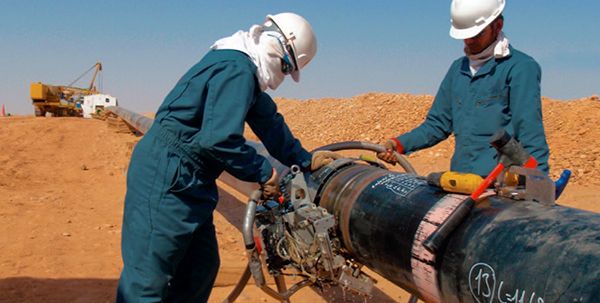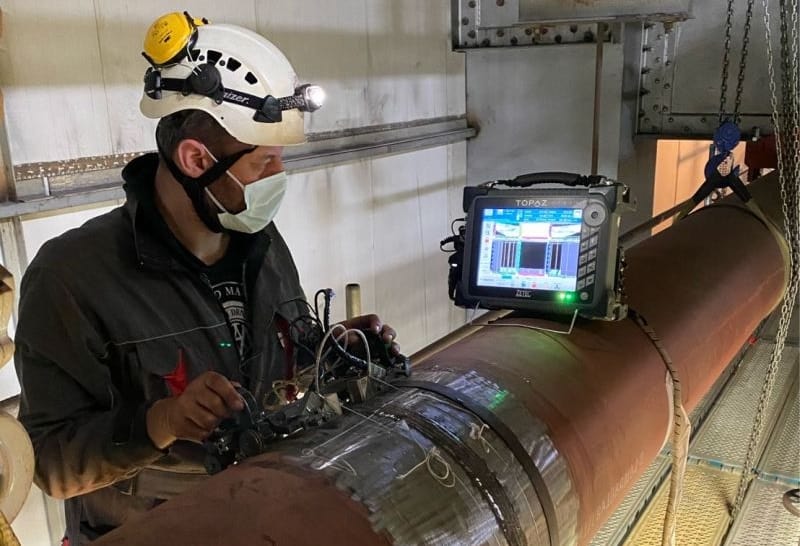Taking Full Advantage Of Performance: Pipe Welding Assessment Ideal Practices
By carrying out finest techniques for pipeline welding assessment, organizations can enhance procedures, lessen mistakes, and enhance project timelines. The thorough attention to detail called for in welding assessment holds the essential to the long-term longevity and integrity of the pipelines, making it a subject of utmost significance in the industry.

Value of Reliable Welding Evaluations
Efficient welding assessments play a critical role in making sure the architectural stability and security of pipes. Appropriate inspections are necessary to recognize any kind of problems, stoppages, or imperfections in the welded joints that might jeopardize the general honesty of the pipe system. By conducting detailed assessments, inspectors can discover concerns beforehand, protecting against prospective leakages, ruptures, or failures that can have severe ecological and safety consequences.
Precise and timely welding inspections additionally assist in maintaining compliance with sector criteria and guidelines. Sticking to these standards is not only a legal demand but also a required measure to assure the dependability and durability of the pipes. Moreover, reliable evaluations can add to cost financial savings by decreasing the demand for expensive repair work or replacements because of welding problems that might have been stopped or corrected during the examination procedure.
Making Use Of Technology for Examinations
To enhance the efficacy and accuracy of pipeline welding examinations, the assimilation of innovative innovations has become significantly crucial in guaranteeing comprehensive and precise evaluations of welded joints. One of the crucial technological advancements in pipeline welding inspections is the use of automated ultrasonic testing (AUT) systems. By accepting these technical services, pipe welding inspections can be carried out more effectively, leading to greater top quality welds, enhanced total safety, and minimized task timelines.
Developing Clear Inspection Protocols
Establishing clear assessment methods is important for ensuring uniformity and integrity in the pipeline welding assessment process. These procedures work as a collection of guidelines that lay out the details actions, requirements, and techniques to be followed during examinations. By plainly defining the examination methods, all assessors involved in the process can comprehend their responsibilities and functions, bring about a much more standard and effective assessment workflow.

Routine review and updates to the inspection methods are also crucial to adjust to altering industry standards and demands. By continually refining and enhancing the protocols based upon feedback and lessons found out, pipe welding inspections can maintain the finest quality standards and governing compliance.
Training and Accreditations for Inspectors

Training and certifications for examiners are extremely important in guaranteeing the skills and effectiveness of individuals charged with supervising pipeline welding procedures - Pipeline Welding Inspection. Correctly trained assessors possess the essential understanding and skills to successfully review weld quality, adherence to welding procedures, and compliance with market criteria and policies
Qualifications, such as those used by the American Welding Society (AWS) or the American Petroleum Institute (API), confirm an inspector's experience and capability to do inspections to the highest criteria. These qualifications commonly call for extensive training, exams, and recurring expert development to guarantee that inspectors remain present with the most recent improvements in welding modern technology and examination methods.
Along with formal certifications, continual training programs play a vital role in boosting assessors' capacities. These programs cover a large range of subjects, including welding procedures, problem discovery, safety methods, and pertinent codes and requirements (Pipeline Welding Inspection). By purchasing comprehensive training and accreditations for inspectors, business can support the integrity of their pipe welding projects and reduce the dangers connected with low-grade welds
Continual Enhancement in Examination Processes
Building upon the foundation of qualified and trained assessors, continuous enhancement in assessment procedures is crucial for making certain the continuous top quality and compliance of pipe welding see page operations. By applying a system of continuous renovation, pipe welding assessment procedures can advance to fulfill the altering needs of the sector, technical developments, and governing requirements. This involves routinely analyzing and assessing inspection techniques, procedures, and devices to identify areas for enhancement.
One key facet of constant enhancement in inspection procedures is comments. Gathering input from examiners, welders, engineers, and various other stakeholders permits for a detailed assessment of current practices and the identification of potential areas for renovation. Additionally, leveraging data and analytics can provide important insights into the effectiveness of assessment processes, making it possible for educated decision-making for optimization.
Additionally, spending in training and growth programs for examiners can ensure that they are equipped with the most recent knowledge and abilities to perform their tasks effectively. Continuous renovation is a vibrant process that needs commitment and commitment from all stakeholders to drive quality in pipe welding examination practices.
Final Thought
Finally, optimizing performance in pipe welding inspections is important for ensuring the high quality and safety of infrastructure jobs. By using technology, developing clear procedures, supplying proper training and accreditations for inspectors, and continuously enhancing assessment processes, organizations can enhance their procedures and lessen risks. It is necessary for markets to prioritize efficient welding evaluations to preserve high requirements and satisfy regulatory demands.
Efficient inspections can add to cost savings by decreasing the requirement for expensive fixings or substitutes due to welding issues that might have been stopped or corrected throughout the evaluation process.
Establishing clear inspection methods is crucial for guaranteeing uniformity and integrity in the pipeline welding inspection process. By plainly specifying the evaluation procedures, all examiners included in the process can recognize their duties and functions, leading to a much more standard and effective evaluation navigate to this site operations.
Clear inspection procedures help in lowering the possibility of mistakes or oversights during the evaluation other procedure.Building upon the structure of qualified and qualified assessors, continuous renovation in examination processes is important for guaranteeing the continuous quality and conformity of pipeline welding procedures.